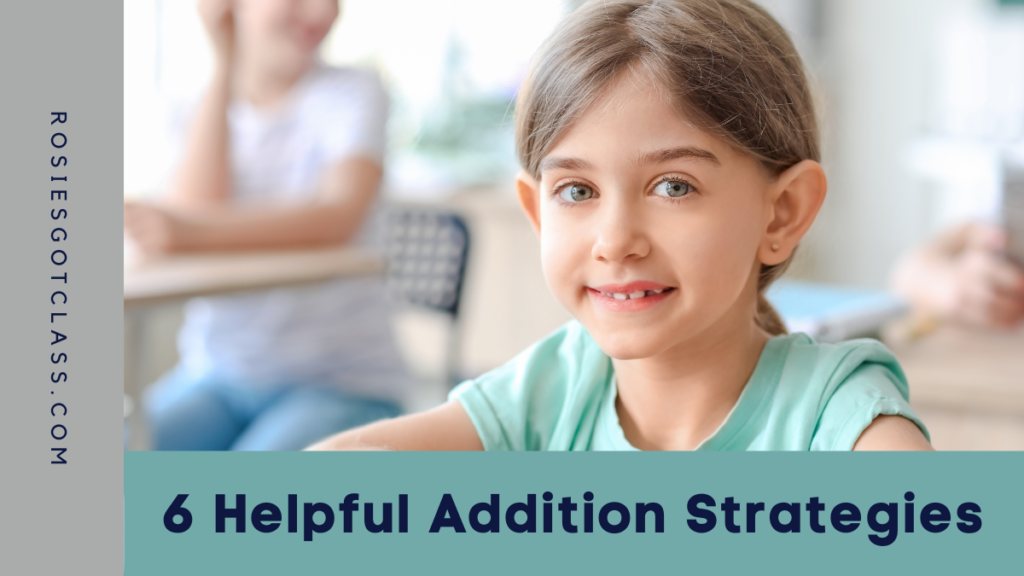
6 Helpful addition strategies to teach your students this week
We use addition strategies every day! Addition is the beginning of many math concepts. While some students naturally grasp this concept, others may need extra help. That’s why I like to teach many addition strategies. This helps to develop flexible thinking in math. It also helps children find the strategy or strategies that work best for them. I like to teach these six powerful addition strategies: counting on, making a 10, using a number line, using doubles facts, using near doubles facts, and monkey in the middle. These strategies can make the learning process more engaging and understandable for students of all ages.
Are you looking for a way to practice addition and subtraction strategies in your classroom? You should consider a classroom transformation because you and your students will love this fun math activity. Use all of the games for a one day activity or use the games throughout a week during your math centers. This engaging activity is simple to prep, so you will want this FREE Zoo Classroom Transformation. Your students will practice both addition and subtraction strategies within 20. This time saving classroom transformation does not take you hours to prepare. Your students will love this way to practice addition strategies. Type your name and email in the boxes, and I will send it to you right away!
When beginning to teach addition strategies, using manipulatives is a part of the process that should not be skipped. The manipulatives help strengthen student understanding so students can see, touch, and feel the equation. By using more senses, it deepens the learning for all students. Manipulatives also make math more fun!
These six strategies can help your students gain a deep understanding of math. All of them should not be taught in one day. They need to be practiced over and over again. This allows children to find the strategy that works best for them. Students should have access to the manipulatives if they are needed even if you have practiced the strategies numerous times and have moved onto the representational and/or abstract stage of using addition.
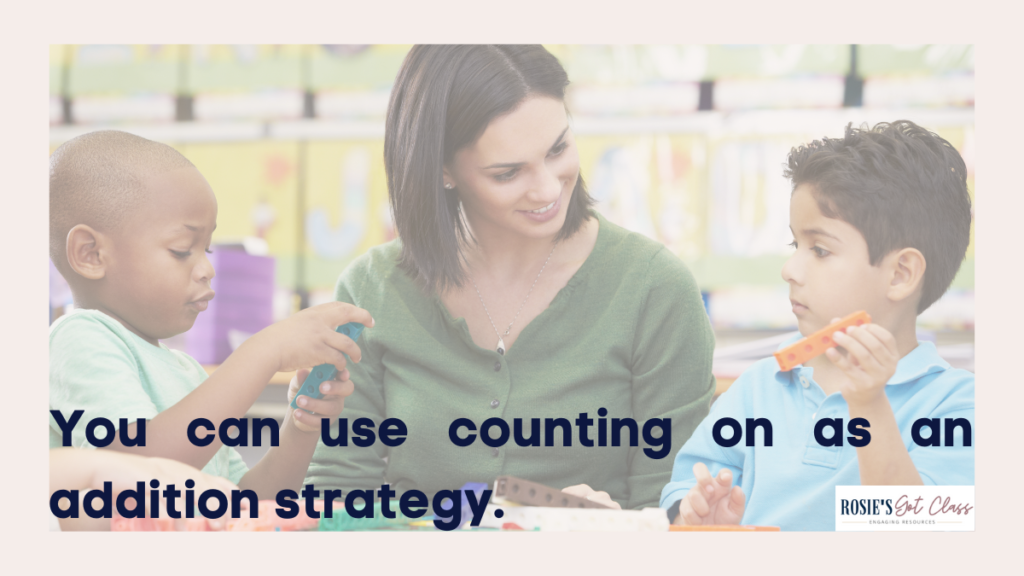
Addition Strategy #1 – Counting On
Counting on is a simple and effective addition strategy that helps students add numbers by progressing forward from the larger number. It also serves as a foundation for more complex strategies. For example, when adding 4 + 3, students can start from the larger number (4) and count on three more: 5, 6, 7. This method helps build number sense and is easily adaptable for various levels of complexity. It is a skill that students can continue to use as they progress to two and three digit addition.
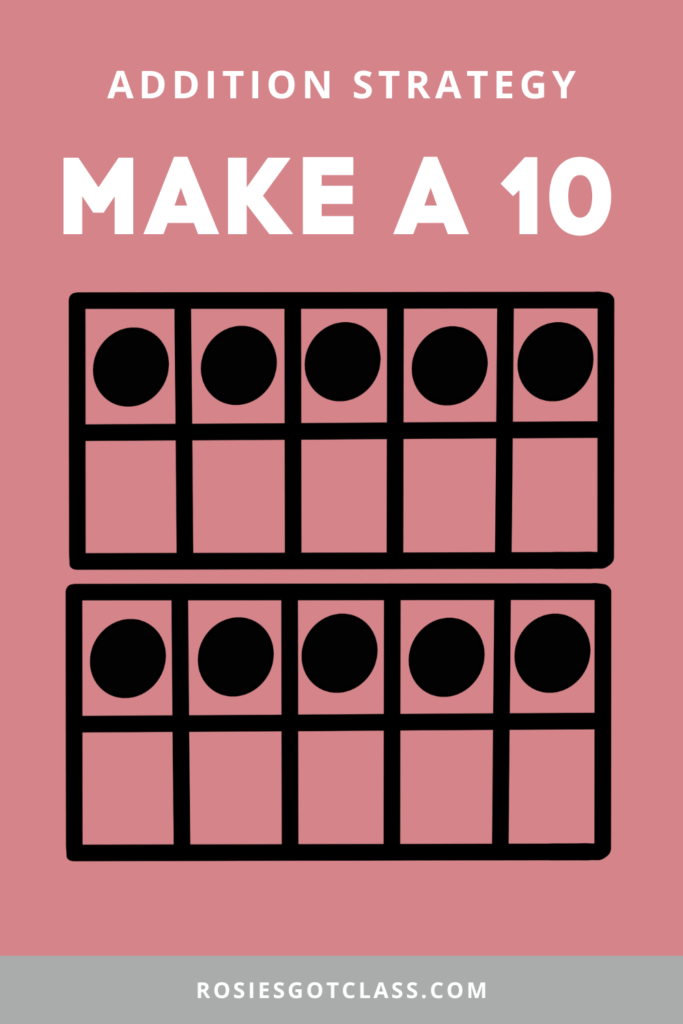
Addition Strategy #2 – Making a 10
Making a 10 is an addition strategy that encourages students to recognize friendly number combinations that total 10. This method simplifies addition by breaking down larger problems into smaller and more manageable ones. For instance, when adding 7 + 8, a student can recognize that 7 + 3 equals 10, and then add the remaining 5 to reach the final answer of 15. Using ten frames to teach this concept, help the students see how making a 10 works. This strategy helps students develop flexible thinking in math and improve their overall math fluency.
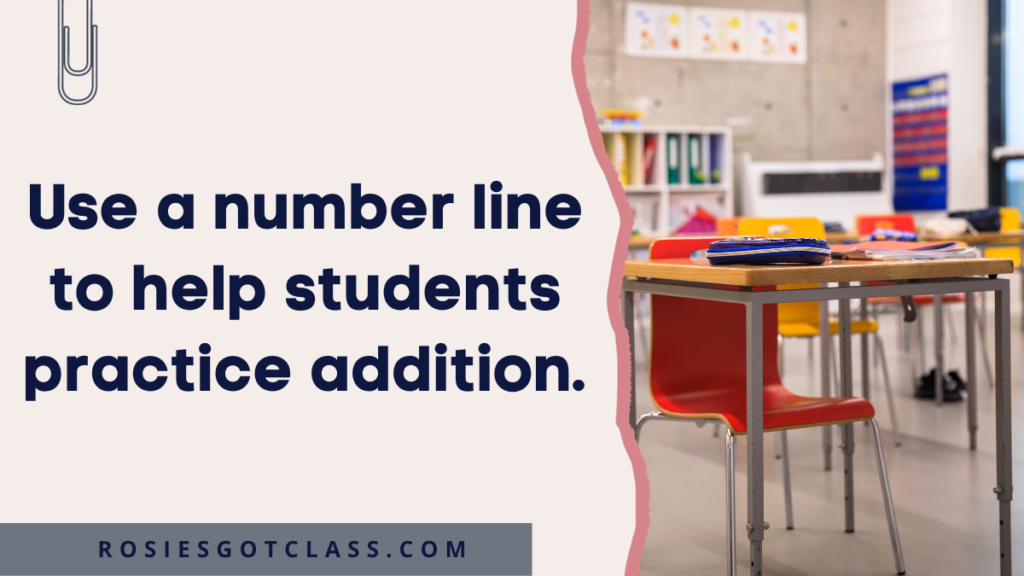
Addition Strategy #3 – Using a Numberline
The number line strategy is a visual aid that helps students understand the relationships between numbers. It is particularly useful for teaching addition and subtraction concepts and can be applied to various grade levels. To use the number line strategy, students start with the first number and then “jump” along the number line according to the value of the second number.
For instance, to solve 6 + 4, students start at 6 on the number line and then jump four spaces to reach the answer 10. This method is a great way to enhance students’ number sense and mental math abilities. A number line is also another tool to use to teach two and three digit addition. When students use a number line with addition and subtraction within 20, it helps them later when they move to larger numbers.

Addition Strategy #4 – Using a Doubles Fact
Teaching doubles facts is fun! I like to use a mirror to demonstrate if I have one cookie and if I am given one more, I now have 2 cookies. Manipulatives help to illustrate this concept. It helps to encourage your students to notice the patterns. I have also found it helpful to use items they already know.
For example, they all know that dogs have four legs. If I ask how many front legs a dog has and how many back legs a dog has, they know that 2+2=4. Then I ask how many legs are on one side of a spider, they all answer 4. If we double 4 and find how many legs are on a spider, they know that 4+4=8.
It is easy to double 5 by using your two hands because they know that 5+5=10 fingers. My students also love when I teach them about 9+9. Many have not learned that a big semi-truck is called an 18 wheeler, but they all have seen them. They love being so smart with this simple explanation to help them learn 9+9=18.
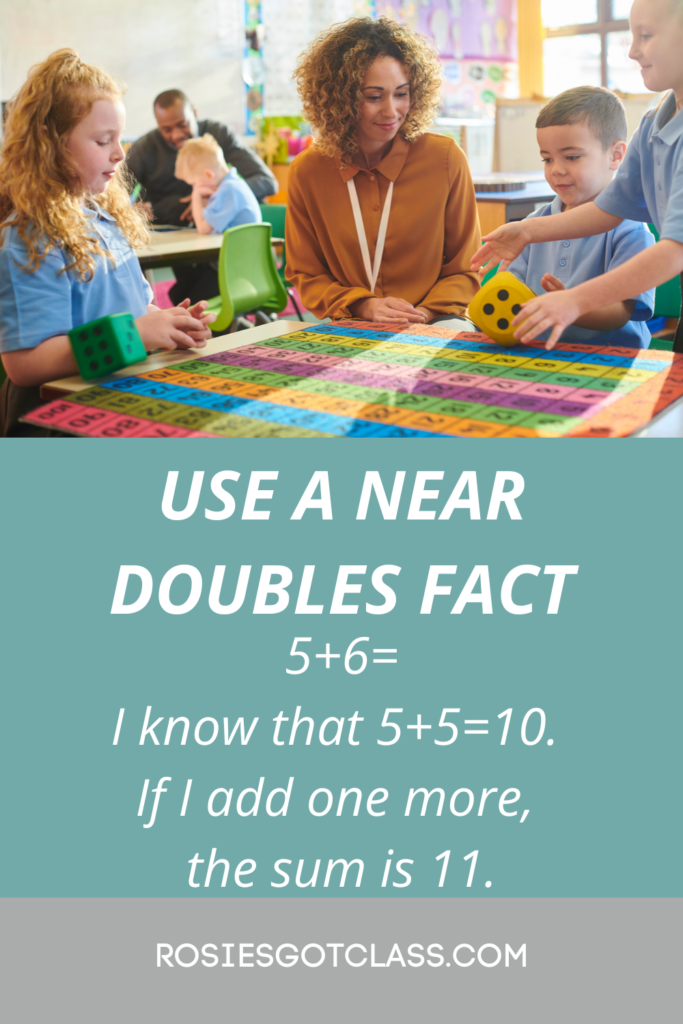
Addition Strategy #5 – Using Near Doubles
The near doubles strategy also uses a doubles fact. It encourages students to recognize pairs of numbers that are close to being doubles because they are next to each other when we count. By learning to notice the patterns in math, this strategy helps build number sense. For example, when adding 7 + 8, a student might notice that 7 is close to 8. They can double 7+7 to equal 14 and then add one more because it is the smaller number to get 15. Students can also choose to double the 8. Since it is the bigger number, they need to subtract 1 from 8+8=16 to get to 15. I like to teach them both ways to foster a deeper understanding of numbers and their relationships.
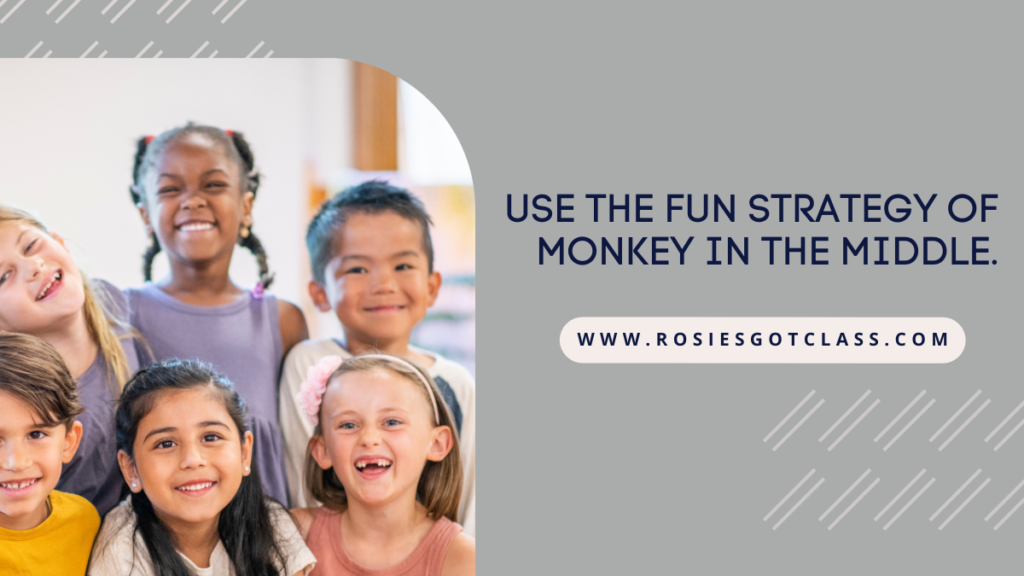
Addition Strategy #6 – Monkey in the Middle
The monkey in the middle strategy is a fun way to notice numbers. Children relate to it because they like to play this game on the playground. Although this is not a technical math name, students have to use complex thinking to notice that the numbers are two even numbers or two odd numbers. They also have to see that they are next to each other when you are counting by even or odd numbers. In addition, students need to know that they can use what they already know to help them solve problems.
How to Do It
Here is how to do it. The problem 6+8 can be one of the more difficult problems for students to learn. If they notice that 6+8 is two even numbers next to each other, they can decide what the number is in between the two numbers. The number in between is 7. Since they already know that 7 doubled is 14, they know that 6+8=14. This is another way to develop more flexibility with their number sense and understanding.
These six addition strategies—counting on, making a 10, using a number line, using doubles, using near doubles, and monkey in the middle—offer different tools to help students develop their addition skills. They cater to different learning styles and can be adapted for various grade levels. By incorporating these strategies, you can foster a deeper understanding of addition, build a strong math foundation, and prepare your students for more advanced math concepts.
Here are some other blog posts links you may find helpful.
https://www.teachingwithkayleeb.com/math-fact-fluency-strategies
https://luckylittlelearners.com/14-strategies-for-teaching-addition


